Chapter 4 Results
4.1 Summary
Females are disproportionately affected by the pandemic in many aspects. First of all, as the worldwide healthcare workforce is made up of around 70% of females, it is not surprising that a much higher number of female health workers worldwide have been infected with COVID-19 than male health workers (female:male \(\approx\) 3:1); however, considerably less female health workers have died from the disease than male workers (female:male \(\approx\) 2:3).
Women are more likely to be exposed to the disease but less less like to die from it. The lower fatality rate for female can be attributed to the fact that women tend to have stronger immune systems to help fight against the virus (Jin et al.). This can also be one of the reasons why woman are less likely to get hospitalized, because the might not be sick enough to go to hospital. However, it is also likely that woman are deprioritized in terms of hospitalization especially in the region where medical resources are limited. Further study can focus on why woman are more likely to exposed to covid and whether the limited medical resources contributes to that woman are less likely to be hospitalized.
The pandemic has aggravate the violence against woman. More than a quarter of woman reported that they have expereinced a form of violence or know someone has experience it during the three year of pandemic. Also, women are feeling less safe since the pandemic, especially those who live in rural areas. Young women who live with children in rural areas are most like to be victim of violence.
Overall, women are more negatively impacted by the pandemic in terms of economic activities, more likely to be burdened with increased domestic and care work as a result of the pandemic, and more likely to face increased difficulty in accessing goods and resources as a result of the pandemic.
4.1.1 Reference
Jin, Jian-Min, et al. “Gender Differences in Patients with Covid-19: Focus on Severity and Mortality.” Frontiers in Public Health, vol. 8, 2020, https://doi.org/10.3389/fpubh.2020.00152.
4.2 WHO COVID-19 Detailed Surveillance Data Dashboard

It can be observed from the plot that a much higher number of female health workers worldwide have been infected with COVID-19 than their male counterparts, approaching a ratio of 3:1 (female:male). This result is expected since the majority of the health workforce all over the world are female. However, even though much more female workers have gotten COVID-19 than male workers, the former are much less likely to have died of COVID-19 than the latter, as the number of worldwide health worker deaths resulted from COVID-19 approaches a ratio of 2:3 (female:male).
4.3 COVID-19 Sex-Disaggregated Data Tracker
We are interested in whether females and male are different in the probability of infection, hospitalization and death. In order to do that, we compute the rate of infection, rate of hospitalization and fatality rate for men and women respectively, and make cleveland dot plot for each rate.

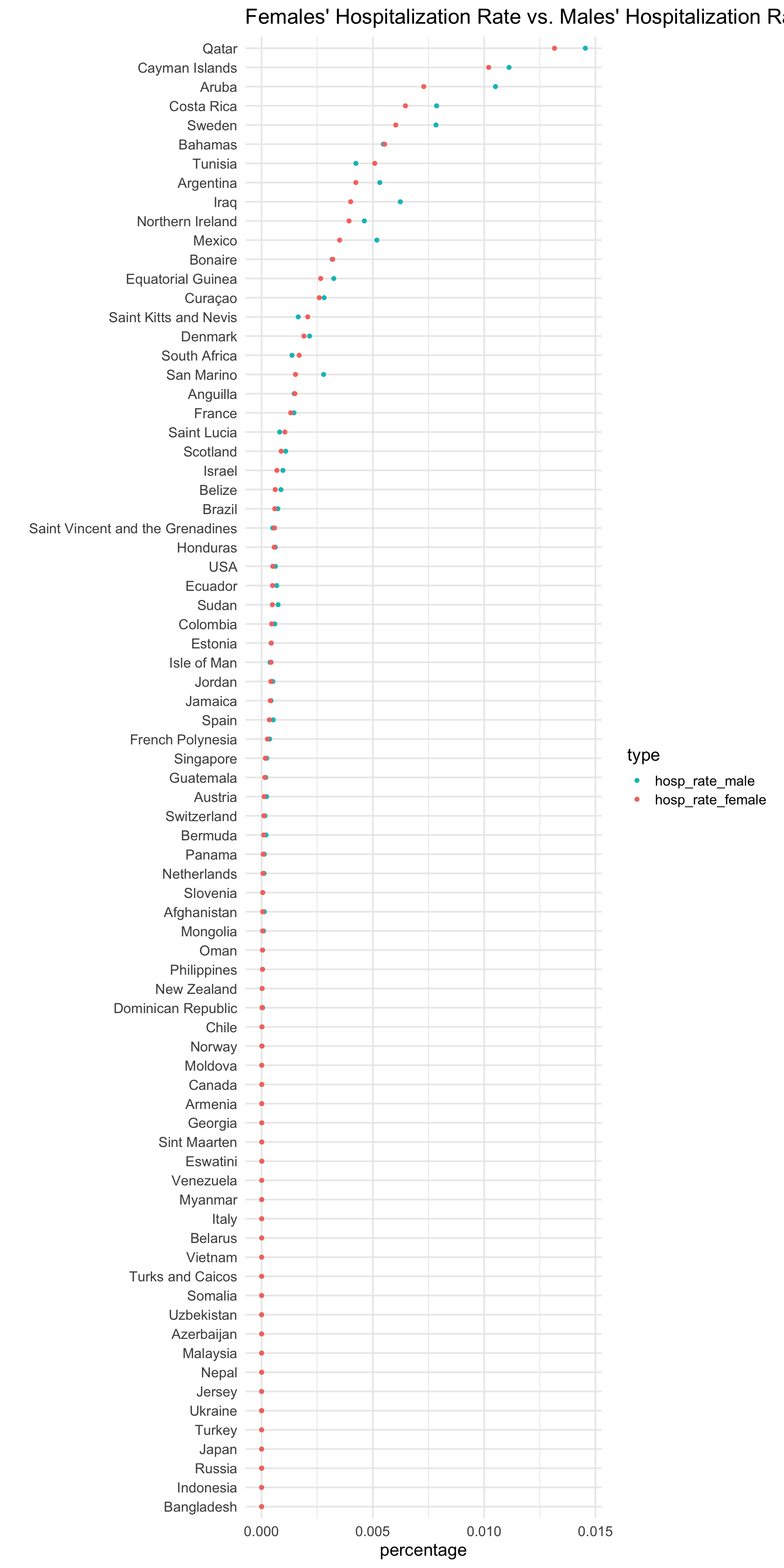
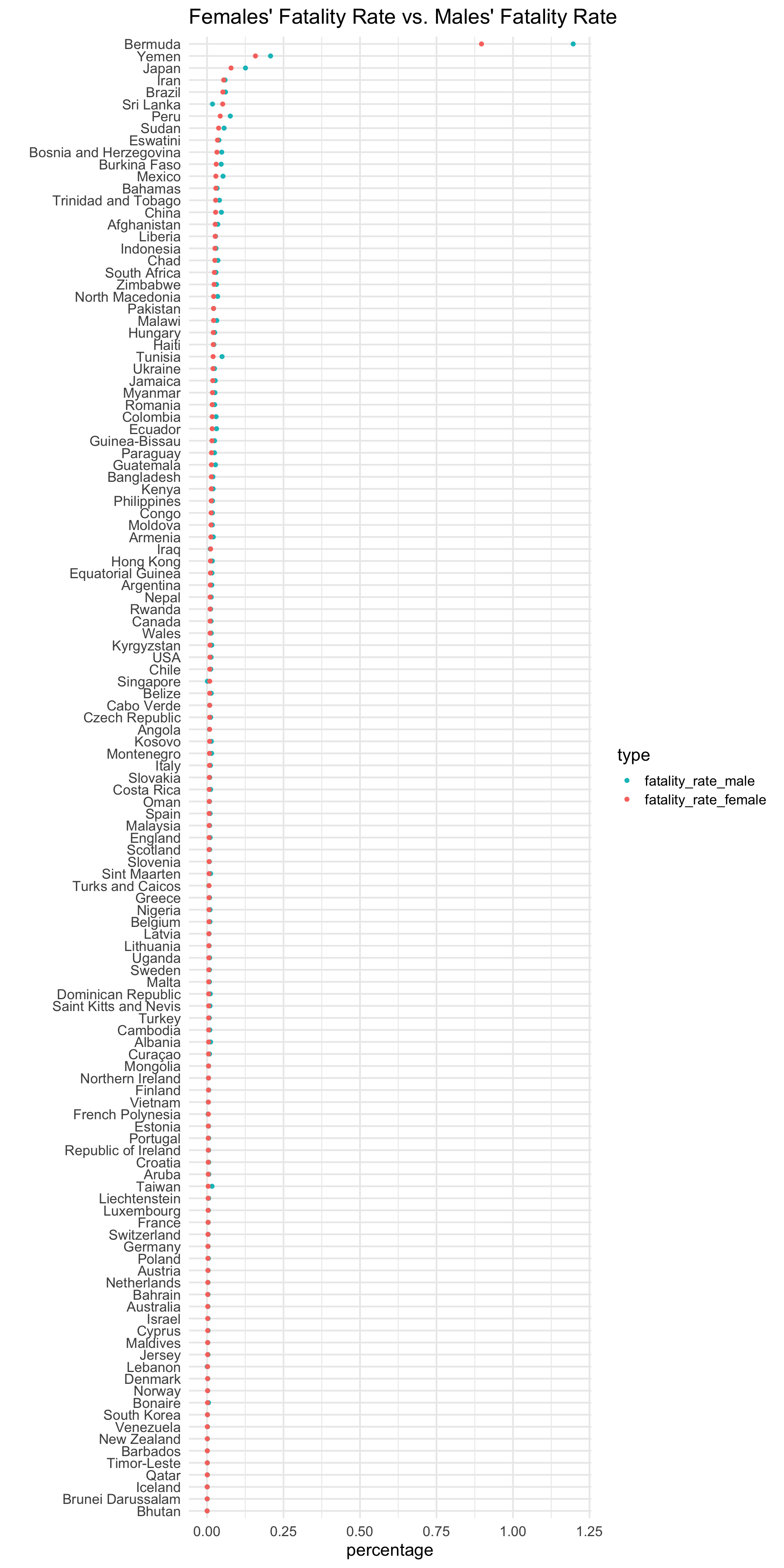
According to the plot of infection rate, females seems to more likely or equally likely to catch covid-19 in most countries. According to the plot of hospitalization rate, women seems to be generally less likely or equally likely to be hospitalized. Finally, the plot of fatality rate shows that females are seems to be less likely to die from COVID-19 in most of countries.
4.4 Survey on Violence Against Woman During COVID-19
## [1] "Colombia" "Paraguay"
## [3] "Albania" "Nigeria"
## [5] "Cote d'Ivoire/Ivory Coast" "Jordan"
## [7] "Bangladesh" "Kyrgyz Republic"
## [9] "Morocco" "Kenya"
## [11] "Ukraine" "Cameroon"
## [13] "Thailand"We first want to investigate how common is violent against woman in daily life and if the pandemic exasperate the situation. We make two bar charts and compare them. One bar chart is proportion of women who reported ever having experienced a form of VAW or knowing another woman who experienced it in lifetime for the 13 countries on the, and the other bar chart is the proportion since the pandemic.
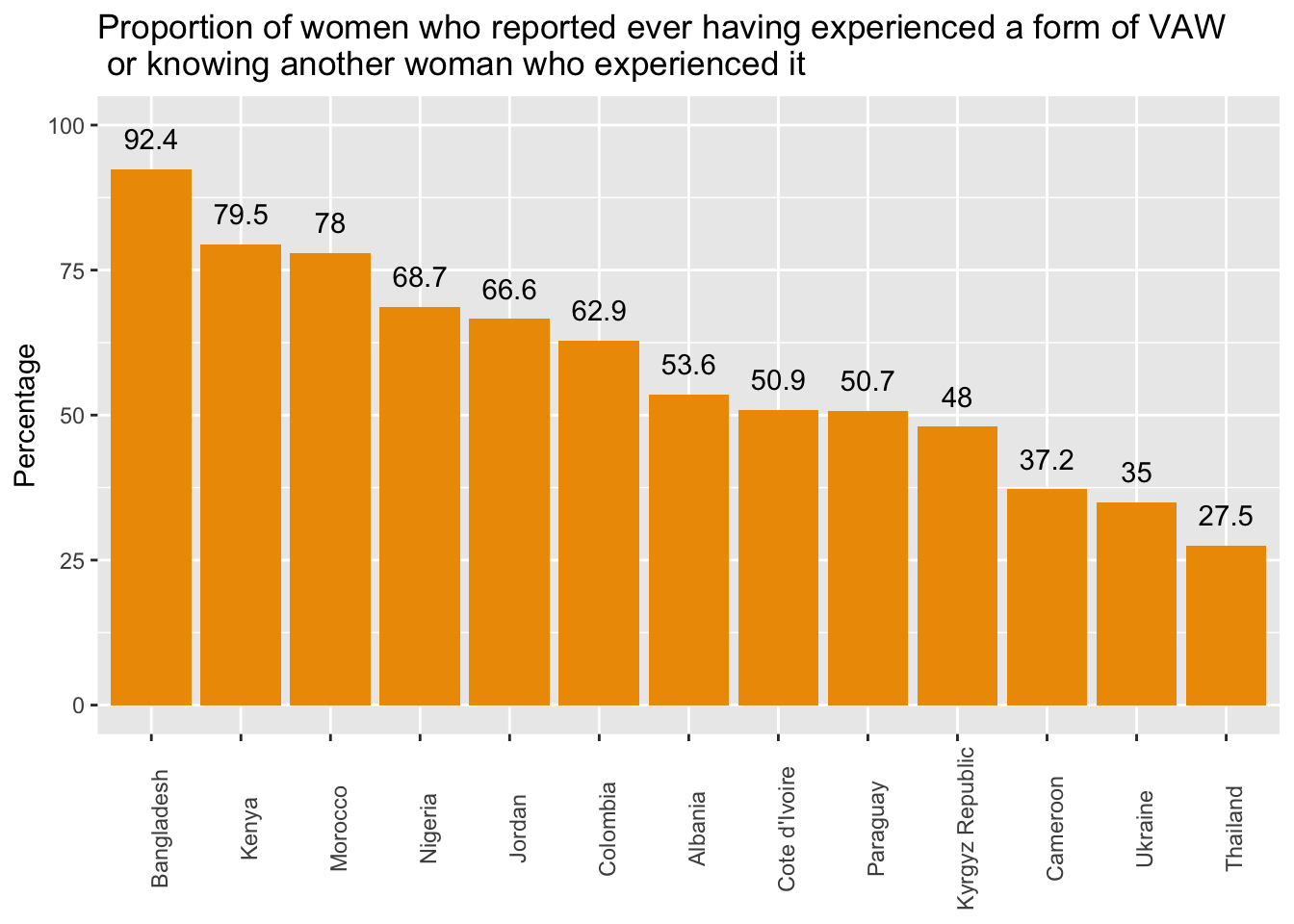

From the first bar chat we can observe that violence against women is a pre-existing problem. In 9 out of 13 countries, more than a half of women have ever experienced or a form of violence or know someone who experienced in lifetime. The proportion since the pandemic is also high. For all countries, more than one forth of women have experienced violence, which is definitely a high proportion given the pandemic has lasted for only three years. Clearly, The pandemic exasperates the violence against women.
Then we want to investigate the population that are most susceptible to violence against women. To do that, we make 3 mosaic plots to investigate the correlation between the proportion of women who experienced VAW (violence against women) and the following four aspects: age, locality, living with children or not and employment status.

Woman aged between 18 and 29 are most likely to reported their experiences of VAW since pandemic and women older than 60 are least like to do that. It is possible that young women are more likely to be the victim and also they are more willing to tell others about the experience and seek help.
Those who live with children are more likely to experience violence. One possible reason is that those who have children usually resident with their partner or husband, and thus more likely to be victims of domestic violence.
Woman living in rural area are more likely to experience violence. This is probably because rural areas are less populated and the predators tend to commit crime in such areas.
Finally, women that are unemployed are much more likely to be treated violently. They may economically dependent on their spouse or partner, and thus tend to endure domestic violence.
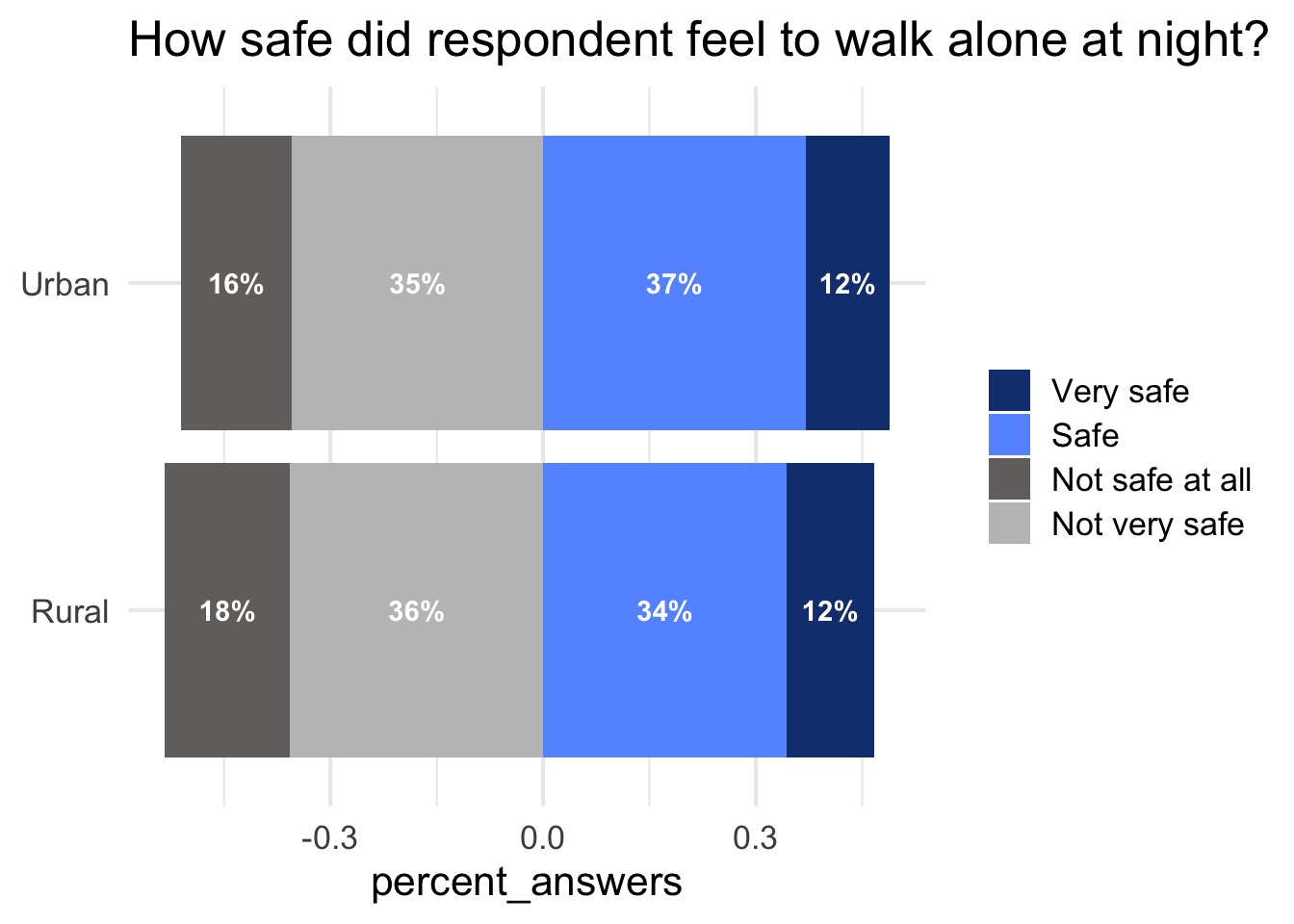
To confirm our proposed reason why women living in rural area are more likely to experienced violence, we made a diverging plot on levels of safety that the respondents feels when they walk alone at night. It shows that slightly more proportion of women living n rural feel unsafe than those living in urban areas.
4.5 Survey on Socioeconomic Impacts of COVID-19
4.5.1 Impact on economic activities
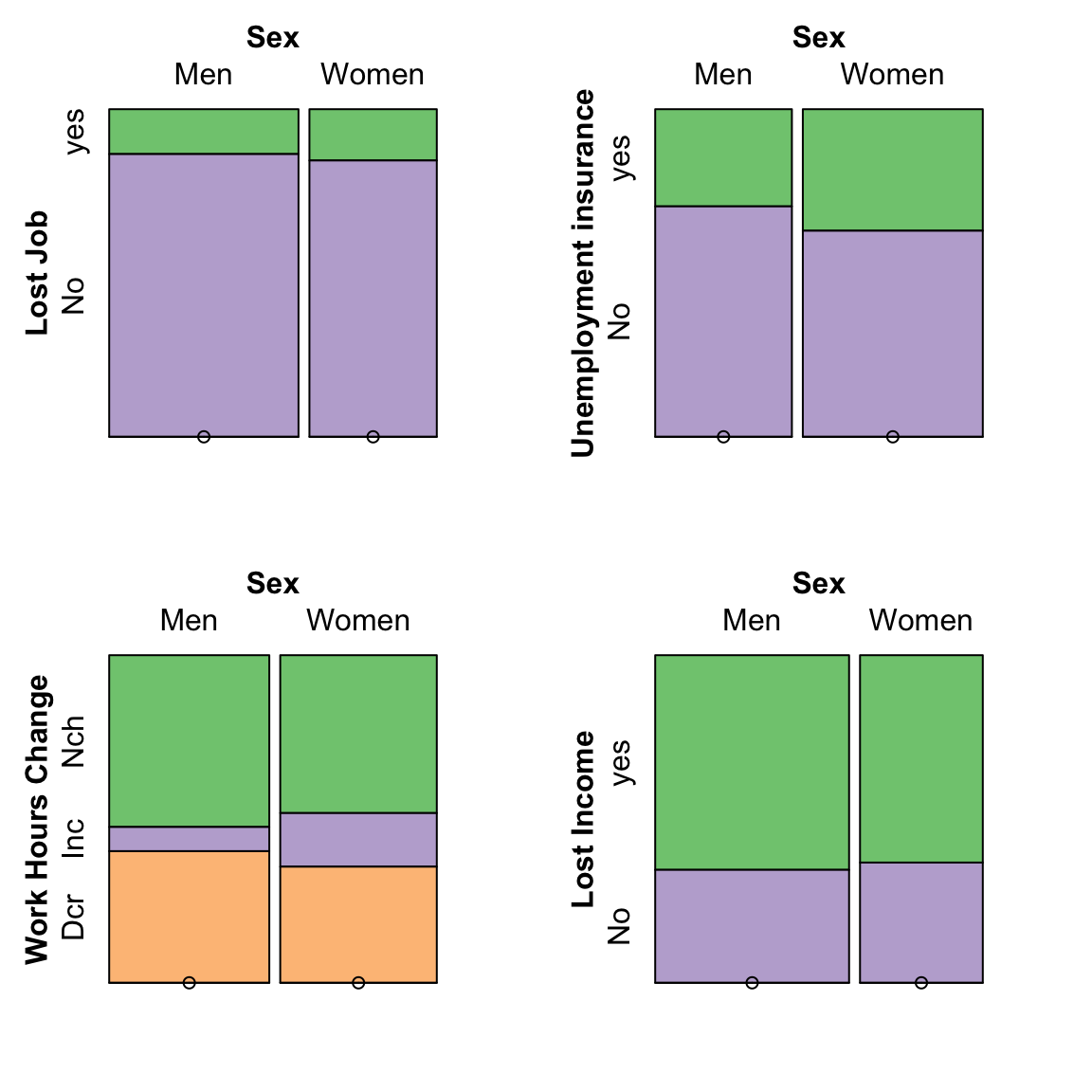
It can be observed that compared to men, women are more likely to lose their jobs and suffer from increased work hours after the pandemic. However, it is shown that women are also more likely to be covered by unemployment insurance than men, and that men are slightly more likely to suffer from income loss than women as a result of the pandemic.
4.5.2 Impact on unpaid domestic and care work
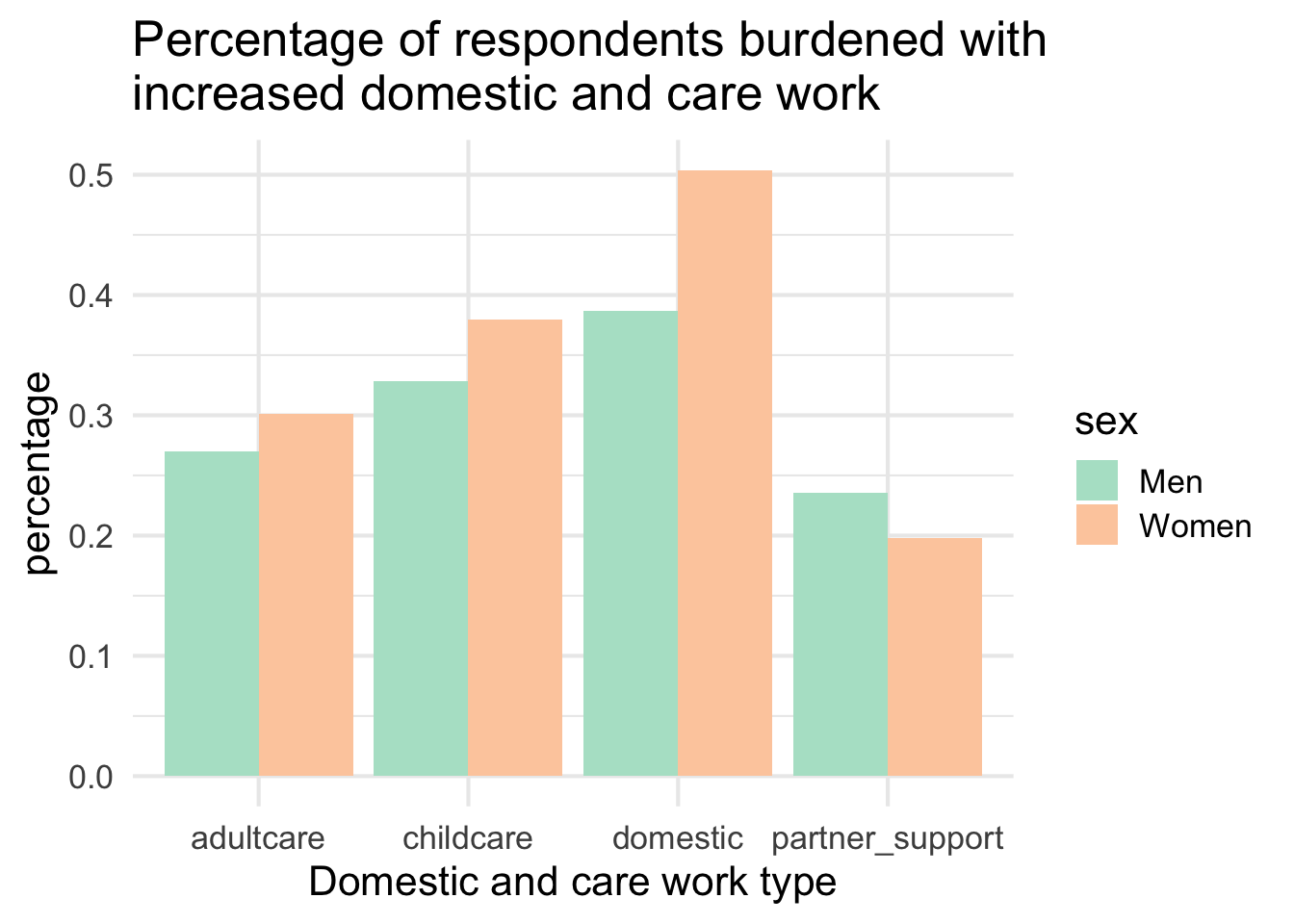
It can be observed that women are more likely than men to be burdened with at least one increased domestic activity, at least one increased adultcare activity, and at least one increased childcare activity. It is also worth noting that, on the contrary, men are more likely than women to have received support from their spouse for domestic and care activities.
4.5.3 Impact on access to goods and resources
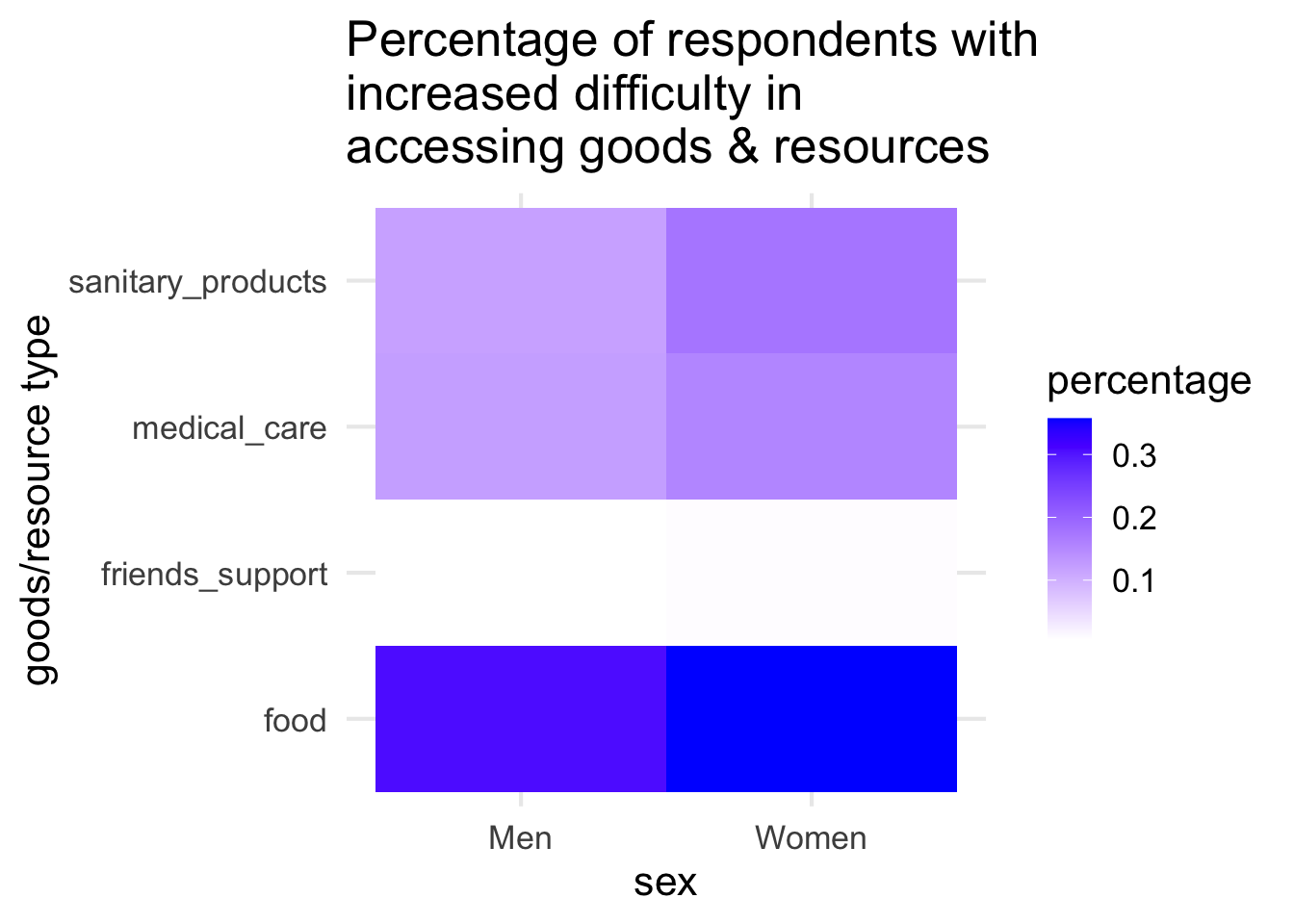
It can be observed that after the pandemic, compared to men, women are more likely to face increased difficulty in accessing food, sanitary products, and medical care (women have darker/bluer shades in these categories in the plot). Men and women are about equally likely to get support from relatives and friends.